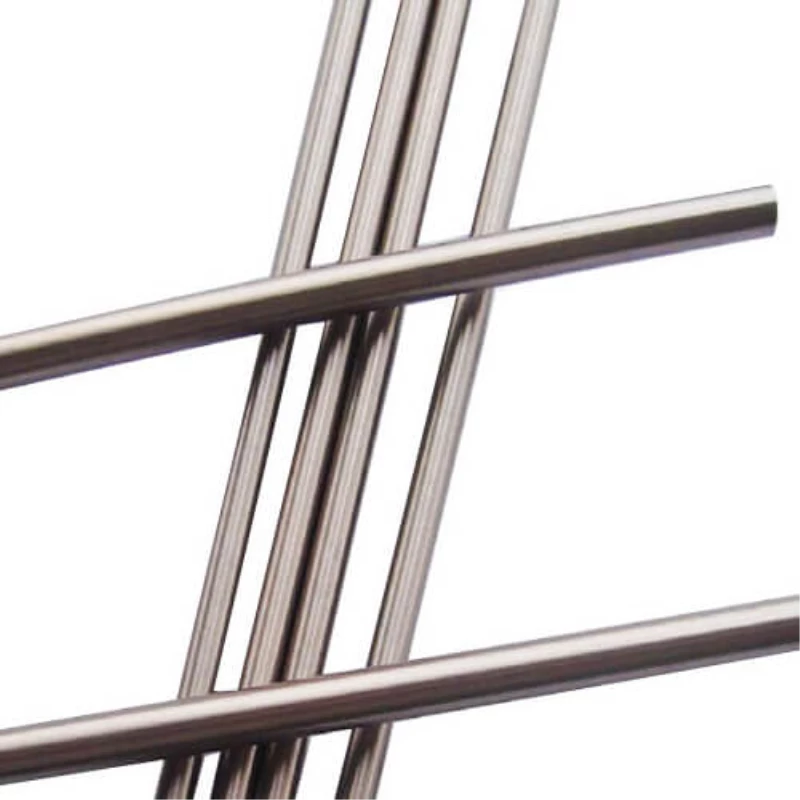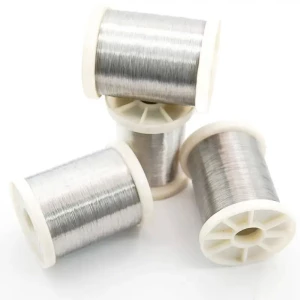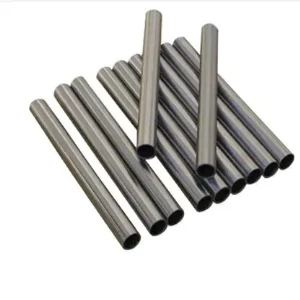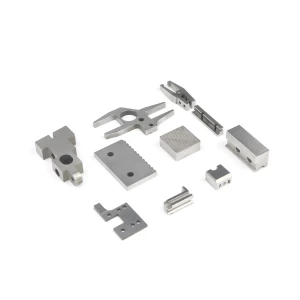Other recommendations for your business
An alloy composed of metal Niobium and metal Titanium. The Titanium content of industrially produced Niobium-Titanium alloys is generally 20% to 60% (mass). The most typical Niobium-Titanium alloy contains 66% Titanium [about 50% (mass)]. They are important alloy-type superconducting materials with a superconducting transition temperature of 8~10K. Adding other elements can further improve superconducting properties. Titanium exists in a solid solution state in the alloy. The alloy is sintered with mixed powder and electrodes composed of niobium flakes and titanium flakes are melted several times in a vacuum consumable arc furnace or electron beam to form an alloy ingot.
Niobium titanium alloy is an important alloy superconducting material. If other elements are added to the alloy, superconductivity will increase.
Niobium titanium alloy is sintered from alloy powder. We use vacuum electrode arc furnaces or electron beam furnaces to melt alloy ingots. Niobium titanium alloy can be in various forms of plates, rods, wires, and targets.
Niobium-titanium superconducting materials have been used in large-scale devices such as superconducting high-energy accelerators, superconducting nuclear magnetic resonance imaging diagnostic instruments, superconducting maglev high-speed trains, and superconducting strong magnetic separators.
It is also used in energy development such as controlled nuclear fusion, magnetic fluid power generation, generators, power transmission, and energy storage.
In addition, it is also used in fields such as strong magnetic propulsion systems (ships, ships, high-speed launch devices) and military and national defense.
In summary, plastic niobium titanium superconducting materials play an important role in large-scale superconducting applications and are the most used in the world. 95%) of superconducting materials.
Name: Titanium-Zirconium alloy Titanium-palladium alloy Niobium-Titanium alloy Zirconium-Niobium alloy Niobium-Hafnium-Tantalum-Niobium alloy Titanium-Molybdenum-Nickel alloy
Brand: Ti-Believer-50℅Zr) (Ti-Zr10℅)
Titanium palladium Alloy (Ti-0.2℅Pd)
Niobium Titanium Alloy (50℅Nb-50℅Ti)
Alloy (50℅Zr-45℅Nb) (Zr-1℅Nb) (Zr-2.5℅Nb)
Niobium-Hafnium Alloy (Nb-Hf)
Tantalum Niobium Alloy (Ta-25℅Nb)
Titanium Molybdenum Nickel Alloy (Ti-0.3Mo-0.8Nb)
Titanium Zirconium Niobium Alloy (Ti-13Zr-13Nb)
Specifications: [Roll], ¢2.0--100mm×Length 1000----4000mm
[Forgings]¢40--280mm×Length 1000----4000mm
Tolerance: H9, H7, H6, h9, h7, h6.
Metallographic structure: A3--A4 level crystal structure can be provided.
Performance: corrosion resistance, alkali resistance, oxidation resistance, high strength
Applications: aerospace, nuclear reactors, sodium lamps, etc.
Status: Annealing status (M) Hot processing status (R) Cold processing status (Y) (annealing, ultrasonic testing)
Surface: forged surface, rolled surface, polished surface, polished surface
Product quality: The product has been inspected by Baoti Group Physical and Chemical Experiment Center/Northwest Nonferrous Metals Research Institute and other quality inspection units.
Supplier's popular products
Contact Supplier
We have more categories for you. lf you can't find the products you want above,just fill in the form and tell us whatproducts you want to import from China.
















